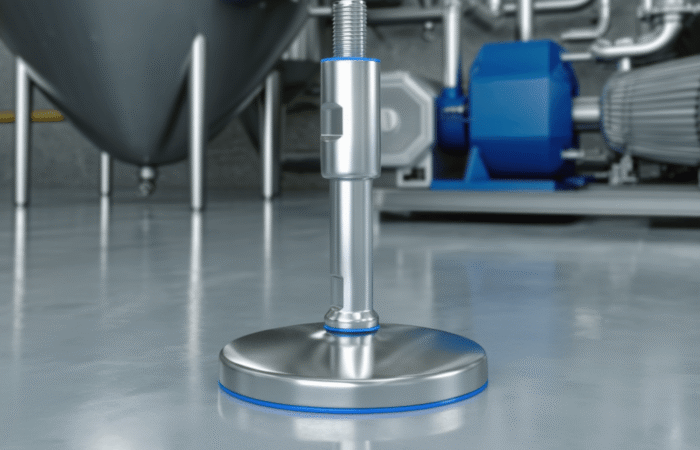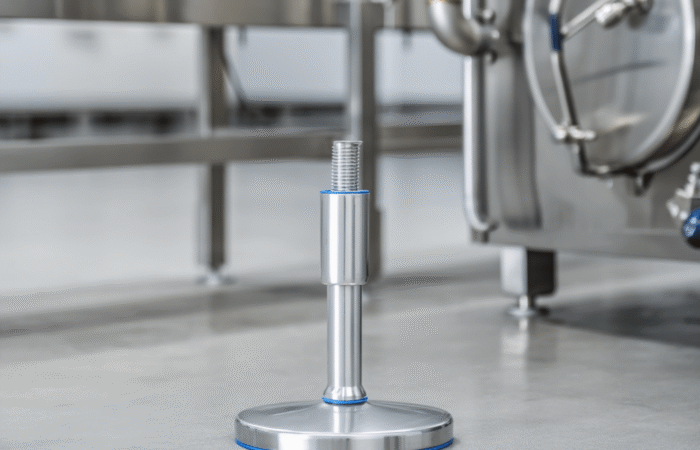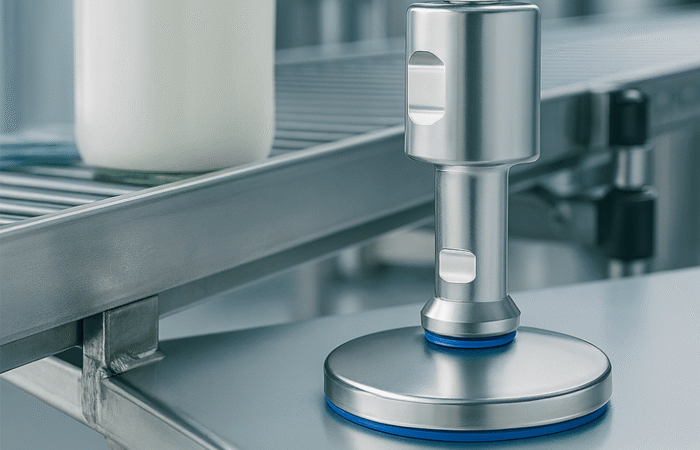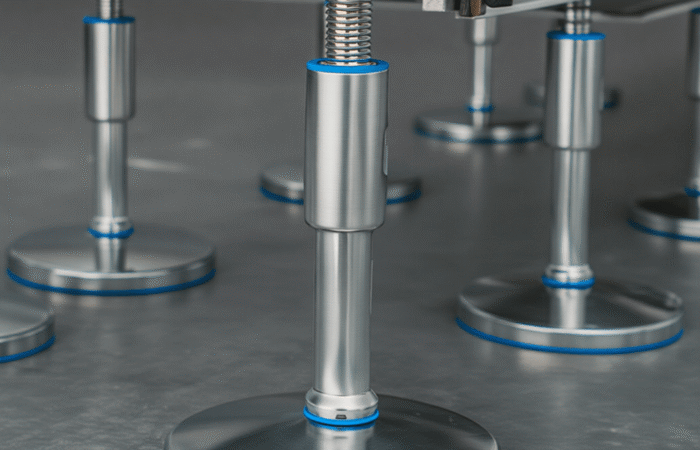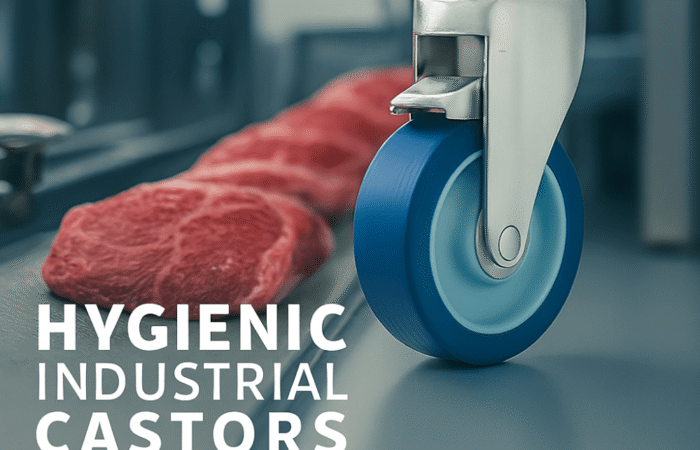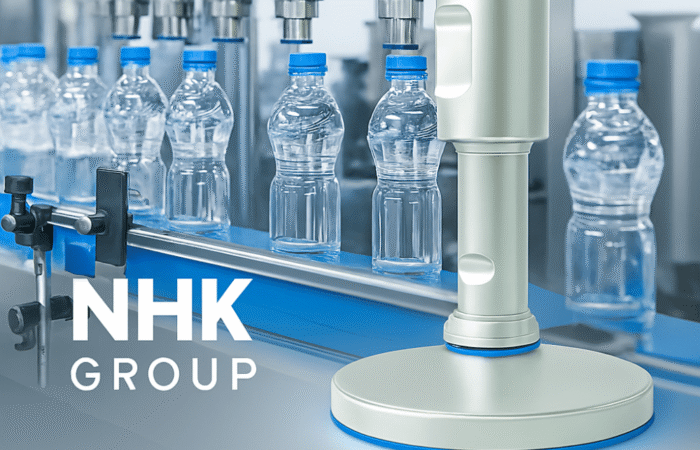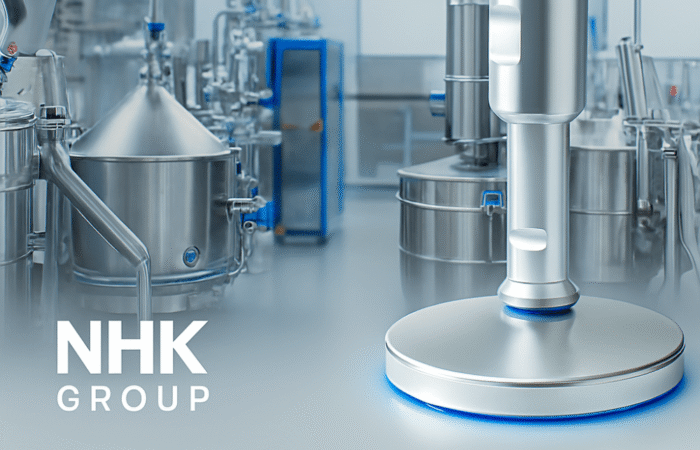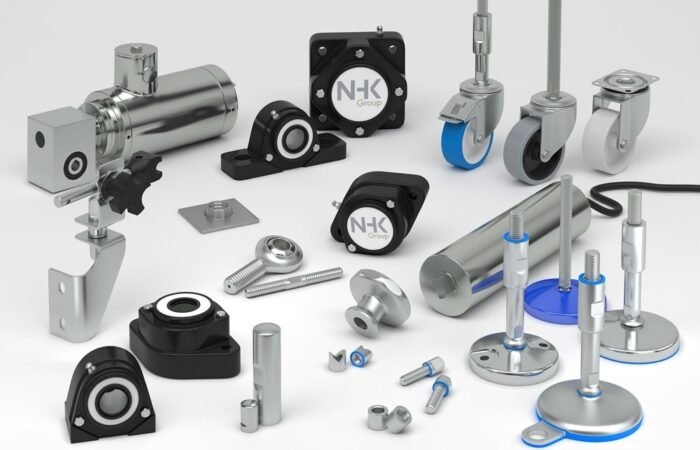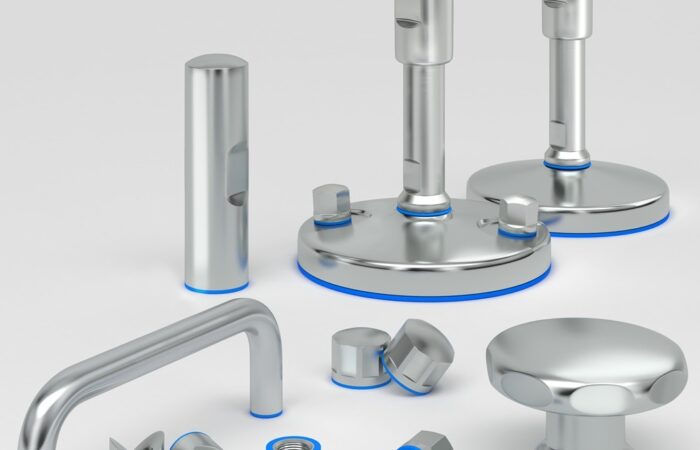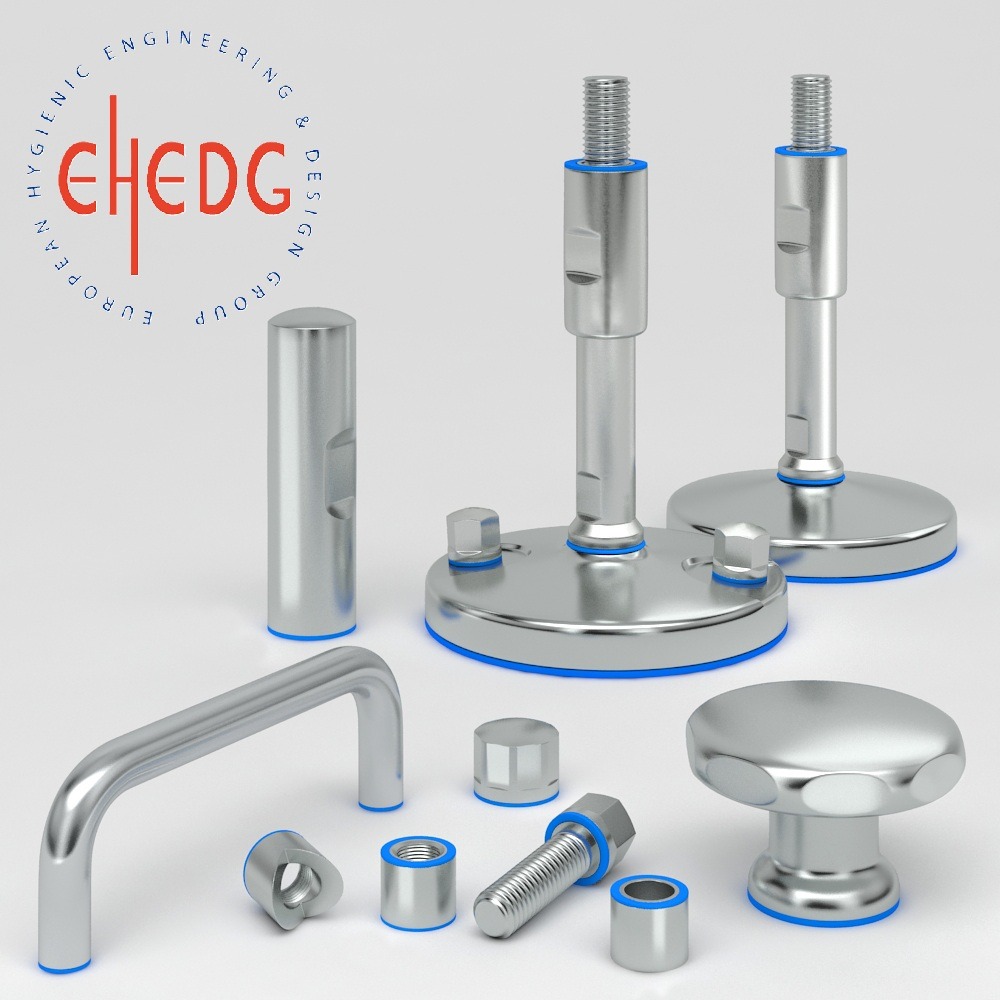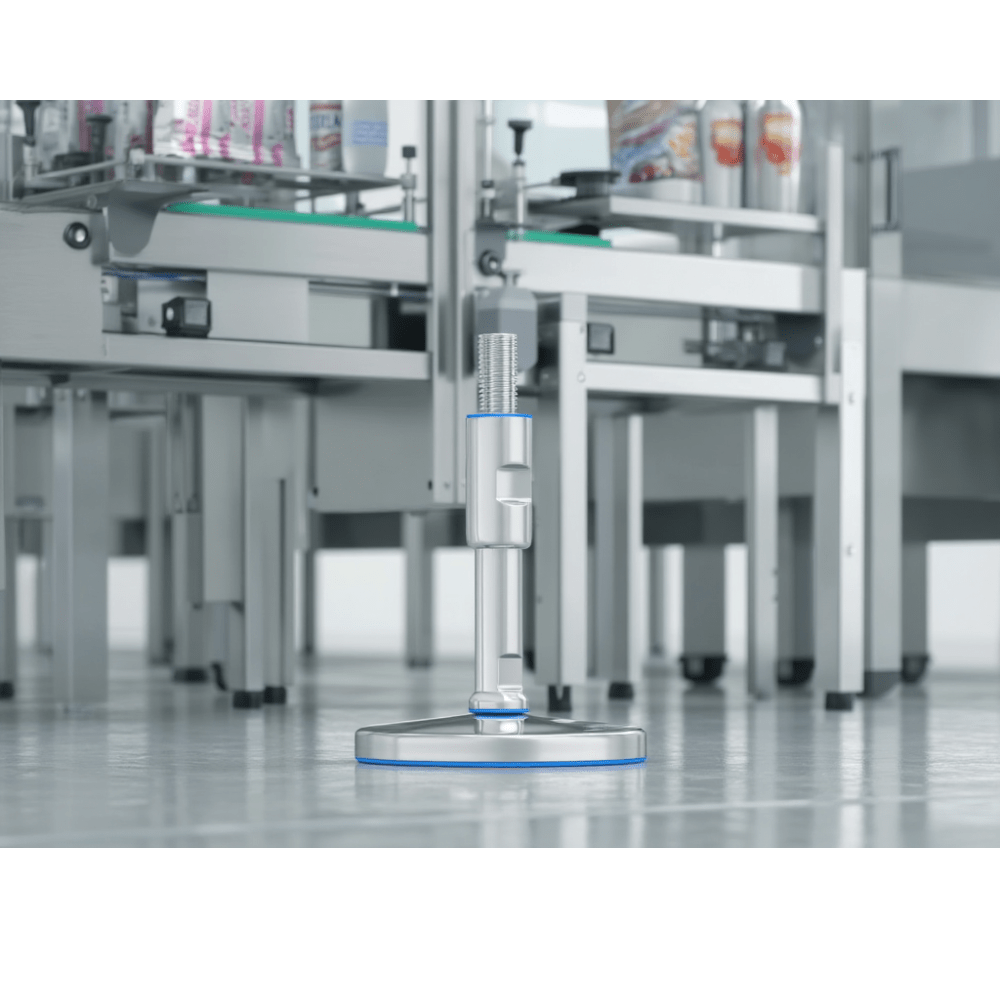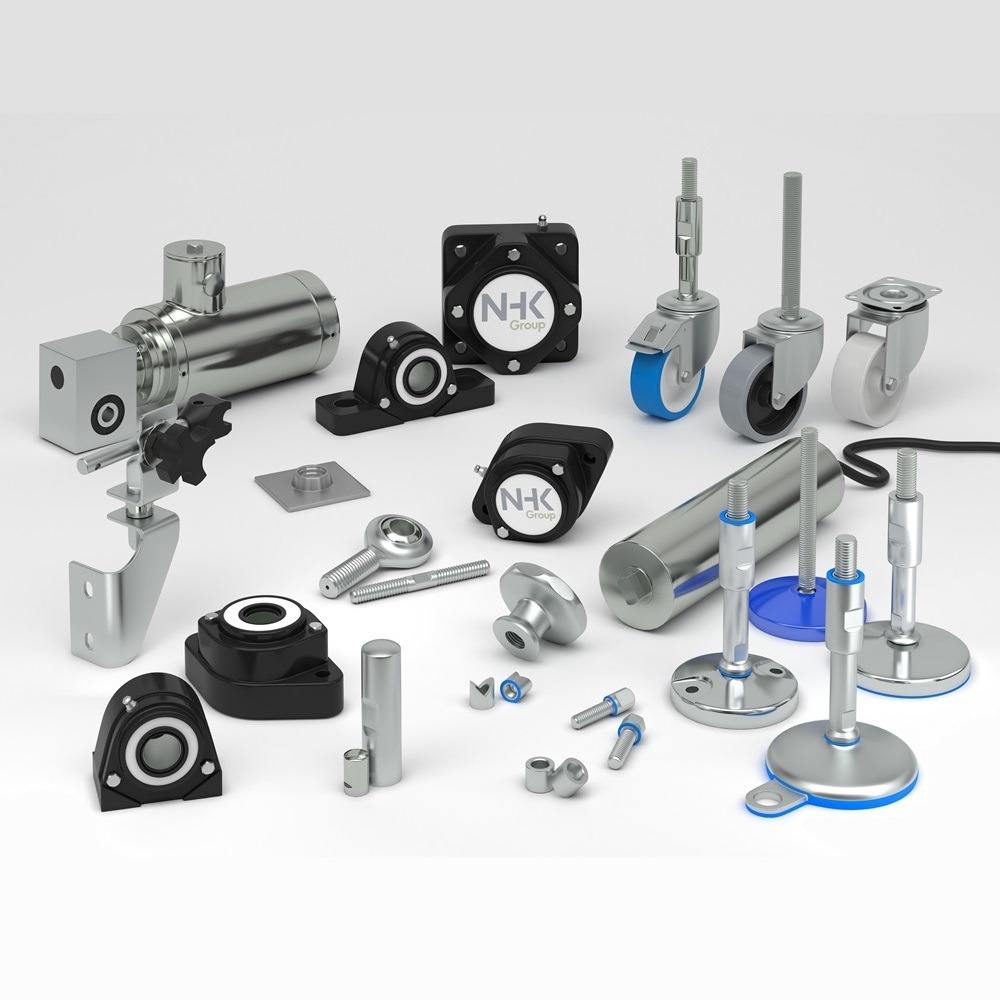
Meat and Poultry Processing
The meat and poultry processing industry is a demanding environment that requires the highest levels of hygiene and safety. To meet stringent standards, the machinery and components used must ensure not only efficiency and durability but also compliance with food safety regulations. Hygienic machinery components and sanitary conveyor parts are essential in maintaining these standards, ensuring that every stage of meat processing, from cutting to packaging, adheres to the strict guidelines necessary to prevent contamination and ensure product quality. Product line | NHK Machinery Parts In this article, we will explore the importance of using hygienic machinery components and sanitary conveyor parts in meat and poultry processing, their applications, and how they contribute to maintaining food safety and operational efficiency. Meat and poultry products are highly perishable and susceptible to contamination by pathogens such as Salmonella, E. coli, and Listeria. To prevent cross-contamination, the equipment used in these facilities must be designed with hygiene in mind. Hygienic machinery components and sanitary conveyor parts are constructed to minimize the buildup of residues, facilitate easy cleaning, and reduce the risk of microbial growth. A key aspect of hygienic design is the use of stainless steel, which is resistant to corrosion and easy to sanitize. In addition, surfaces must be smooth and free of crevices where bacteria can hide. This design principle applies to all components, including bearings, leveling feet, seals, and conveyor belts. Cutting and deboning machines are used to break down whole animals into various cuts of meat. These machines must operate precisely and reliably, and their components—such as blades, bearings, and leveling feet—must be able to withstand repeated washdowns. Hygienic components in these machines reduce the risk of contamination and ensure that the meat is processed in a safe and sanitary manner. Grinders and mixers handle raw meat, making them a prime location for bacterial growth if not properly maintained. Hygienic seals and gaskets are essential in these machines to prevent contamination of the ground meat. Sanitary bearings and waterproof components ensure that the machines can be cleaned thoroughly without risk of water damage. Sausage stuffing involves filling casings with ground meat, which requires precision and hygiene. Hygienic conveyor belts and easy-to-clean seals are vital in preventing contamination during this process. Properly designed components also help maintain the integrity of the meat mixture, ensuring a high-quality final product. Packaging machines are used to seal meat products for distribution, and hygienic components ensure that the packaging process is contamination-free. Hygienic conveyor parts, such as rollers and belts, must be able to withstand rigorous cleaning and resist the buildup of meat juices and residues. The use of hygienic machinery components and sanitary conveyor parts is essential in meat and poultry processing. From cutting machines to packaging systems, each component plays a critical role in maintaining product safety and quality. By investing in high-quality, hygienic components, meat processors can ensure compliance with food safety standards, enhance operational efficiency, and ultimately deliver safer products to consumers. Industrial machinery requires precision-engineered components that meet exacting standards for durability, safety, and performance. This comprehensive guide explores the essential machinery parts that drive modern manufacturing across food processing, packaging, and chemical industries. Understanding the difference between Bearing Housings and Flanged Bearings is crucial for engineers and procurement professionals seeking to optimize equipment longevity. Pillow block bearings, also known as plummer blocks, are self-aligning bearing units that simplify installation and significantly reduce maintenance costs. These versatile components mount on machine frames and support rotating shafts with exceptional precision, ensuring smooth operation in demanding industrial environments. Flange bearing units offer a more compact alternative, featuring integrated flanges that enable direct mounting to flat surfaces without additional hardware. Both designs come in various materials, including stainless steel grades optimized for corrosive environments and food-grade applications where hygiene is paramount. The importance of material selection cannot be overstated in machinery design. Type 440 Steel and 420 grades offer distinctly different properties suited to specific applications and environmental conditions. The 440 stainless steel variant provides superior hardness and exceptional edge retention, making it ideal for cutting tools and high-wear applications requiring maximum durability. Meanwhile, 420 stainless steel offers better corrosion resistance and is preferred in food processing equipment where chemical exposure is common. Hygienic stainless steel components have become essential in food machinery, meeting EHEDG standards and facilitating rapid equipment cleaning required in modern food production facilities. Understanding ingress protection ratings is equally critical for machinery durability and operational reliability. IP67 rating ensures protection against dust and temporary water immersion, while IP68 rating provides complete dust protection and sustained water immersion capabilities for submerged operations. The IP69K standard represents the highest protection level, specifically designed for high-pressure wash-down environments found in industrial food processing facilities. These ratings define how effectively machinery components withstand environmental challenges and maintain performance. Modern industrial facilities increasingly demand equipment that combines high performance with ease of maintenance and sanitation. The choice between different bearing types depends on operational requirements, environmental conditions, and budget constraints. Proper component selection ensures extended equipment lifespan, reduced downtime, and improved operational efficiency.Hygienic Machinery Components and Sanitary Conveyor Parts in Meat and Poultry Processing
The Importance of Hygienic Design in Meat and Poultry Processing
Key Hygienic Components for Meat and Poultry Processing
Bearings are integral to the operation of many meat processing machines, such as cutting machines and grinders. In this environment, bearings must withstand frequent washdowns, exposure to meat juices, and the use of cleaning agents. Hygienic bearings are typically sealed to prevent the ingress of contaminants and are made from stainless steel to ensure longevity and resistance to corrosion. IP67 waterproof ratings are common in these components to ensure they can withstand high-pressure cleaning.
Conveyor systems play a crucial role in transporting meat and poultry products through various stages of processing. Sanitary conveyor belts and rollers are designed to meet the specific needs of meat processing, such as transporting raw meat, carcasses, and finished products. These conveyors are made of materials that resist cuts and tears and can be easily sanitized. Modular plastic belts, which are easy to disassemble for thorough cleaning, are a popular choice in meat and poultry processing facilities.
Leveling feet are used to stabilize equipment such as grinders, deboning machines, and sausage stuffers. In a meat processing environment, these feet must be made of stainless steel and designed to prevent the buildup of meat particles. Hygienic leveling feet often feature smooth surfaces and protective caps that eliminate threads and crevices, making them easy to clean and reducing the risk of bacterial contamination.
Seals and gaskets are used in various machinery, such as grinders and deboning machines, to prevent leaks and protect sensitive areas from contamination. In meat processing, these components must be made from food-grade materials and designed to withstand harsh cleaning chemicals. Hygienic seals are often colored to make it easier to spot any wear or damage, ensuring that they are replaced before contamination can occur.
Mobility is essential for cleaning and maintenance in meat processing plants. Equipment must often be moved for deep cleaning or reconfigured to handle different products. Sanitary castors and wheels are made from non-corrosive materials and are designed to prevent the buildup of grease and other residues. These components are easy to clean and provide stability, ensuring that hygiene standards are maintained even when equipment is mobile.Applications of Hygienic Components in Meat and Poultry Processing
1. Cutting and Deboning Machines
2. Meat Grinders and Mixers
3. Sausage Stuffers
4. Packaging Machines
Benefits of Using Hygienic Components and Conveyor Parts
Hygienic Machinery Components and Sanitary Conveyor Parts in Meat and Poultry Processing
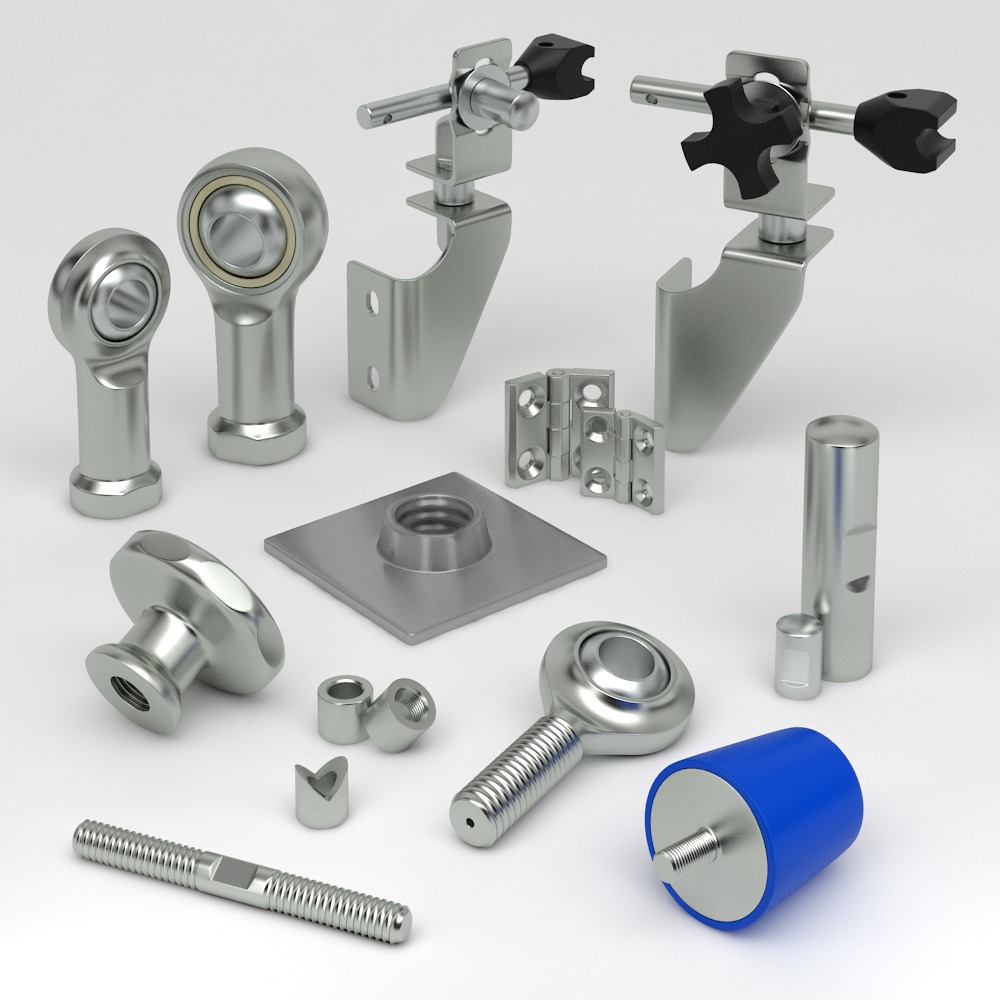
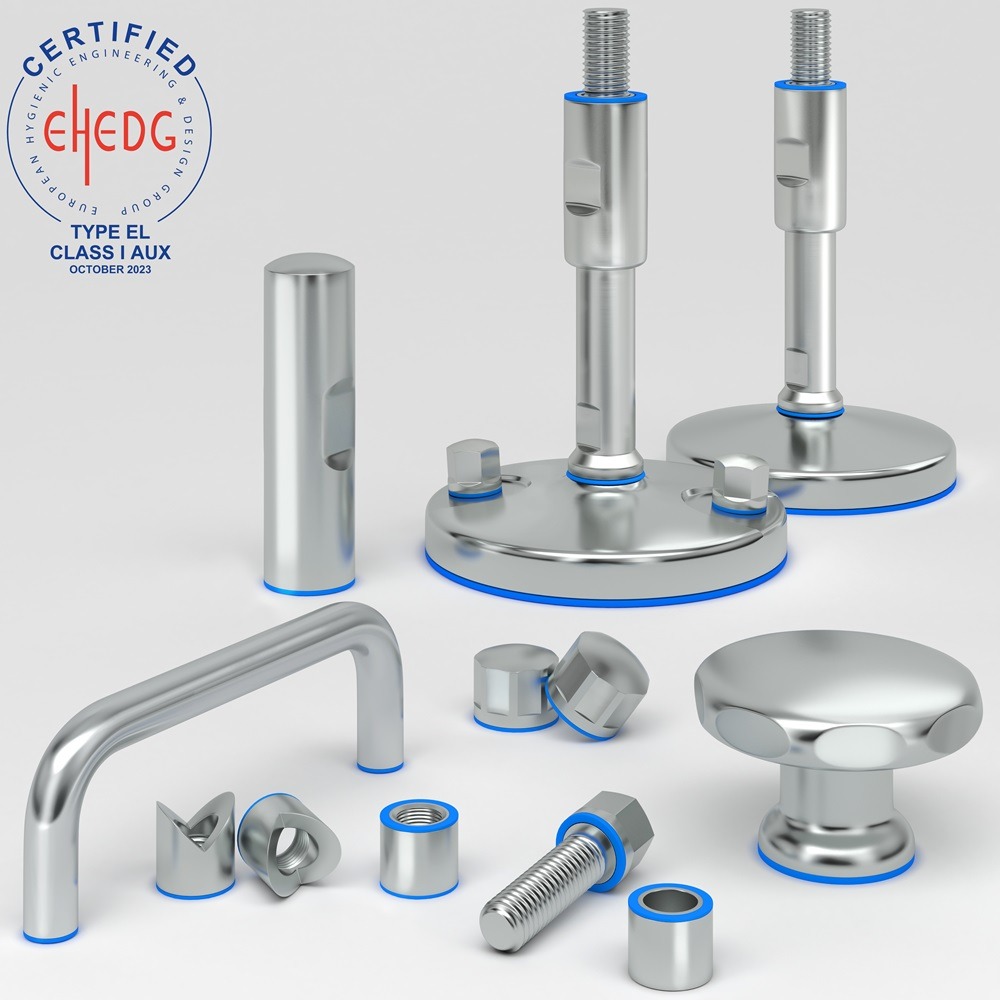
Contact
Understanding Machinery Components & Protection Standards


